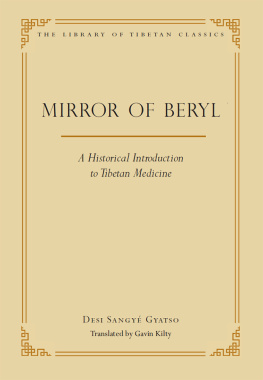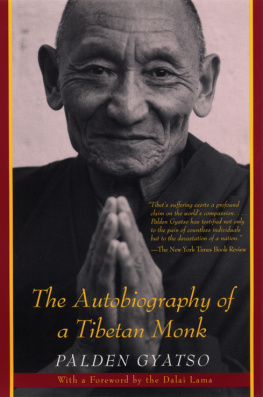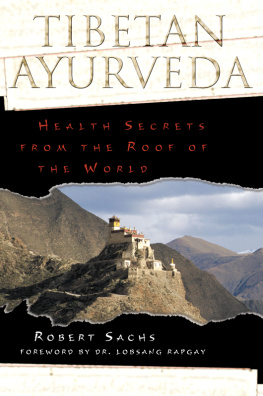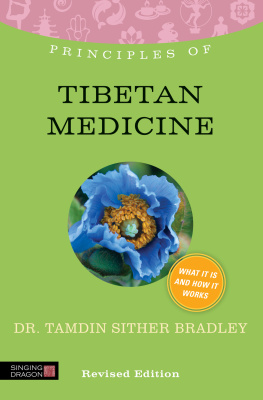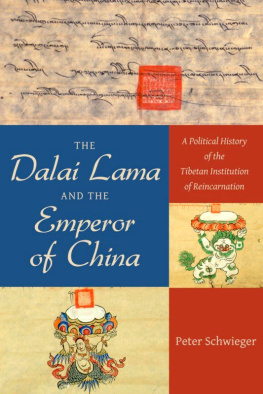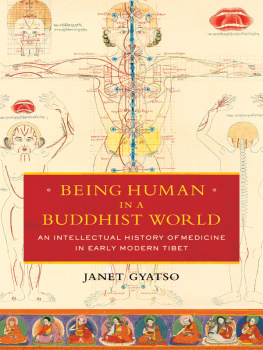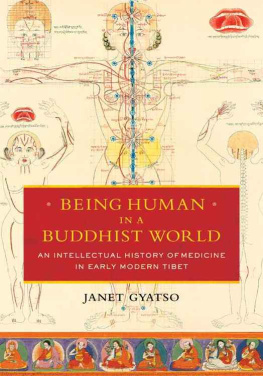Table of Contents
- M IRROR OF B ERYL
A Well-Explained History of the Glorious Science of Medicine, A Feast to Delight the Rishis
The Library of Tibetan Classics is a special series being developed by the Institute of Tibetan Classics aimed at making key classical Tibetan texts part of the global literary and intellectual heritage. Eventually comprising thirty-two large volumes, the collection will contain over two hundred distinct texts by more than a hundred of the best-known Tibetan authors. These texts have been selected in consultation with the preeminent lineage holders of all the schools and other senior Tibetan scholars to represent the Tibetan literary tradition as a whole. The works included in the series span more than a millennium and cover the vast expanse of classical Tibetan knowledgefrom the core teachings of the specific schools to such diverse fields as ethics, philosophy, psychology, Buddhist teachings and meditative practices, civic and social responsibilities, linguistics, medicine, astronomy and astrology, folklore, and historiography.
Mirror of Beryl: A Historical Introduction to Tibetan Medicine
Desi Sangy Gyatso (16531705)
Mirror of Beryl is a detailed account of the origins and history of medicine in Tibet through the end of the seventeenth century. Its author, Desi Sangy Gyatso (16531705), was the heart disciple and political successor of the Great Fifth Dalai Lama and the author of several highly regarded works on Tibetan medicine, including Blue Beryl , a commentary on the foundational text on Tibetan medical practice, Four Tantras . In the present historical introduction, Sangy Gyatso traces the sources of influence on Tibetan medicine to classical India, China, Central Asia, and beyond and shows how it developed in Tibet through royal patronage and the establishment of practice lineages. He provides an extensive bibliography of works on medicine, many of which are no longer extant; he provides life details on many central figures, such as Yuthok Ynten Gyatso, and critiques the contribution of another influential figure, Surkhar Lodr Gyalpo.
In addition to his historical survey, Sangy Gyatso devotes significant portions of his text to other topics as well. He investigates, for instance, the question of whether Four Tantras is the word of the Buddha or of a later figure, such as Yuthok. He gives a commentary on the three levels of Buddhist vowspratimoka, bodhisattva, and tantric, giving special attention to the last. Finally, he details the qualities necessary in a master and student of Tibetan medicine.
Written at the very end of his life, Desi Sangy Gyatsos Mirror of Beryl remains today an essential resource for students of medical science in Tibet.

C OMPOSED WHILE ITS AUTHOR was the ruler of Tibet, Mirror of Beryl is a detailed account of the origins and history of medicine in Tibet through the end of the seventeenth century. Its author, Desi Sangy Gyatso (16531705), was the heart disciple and political successor of the Great Fifth Dalai Lama and the author of several highly regarded works on Tibetan medicine, including his Blue Beryl commentary on the foundational text of Tibetan medicine, Four Tantras. In the present historical introduction, Sangy Gyatso traces the sources of influence on Tibetan medicine to classical India, China, Central Asia, and beyond, providing life stories, extensive references to earlier Tibetan works on medicine, and fascinating details about the Tibetan approach to healing. He also provides a commentary on the pratimoka, bodhisattva, and tantric Buddhist vows. Desi Sangy Gyatsos Mirror of Beryl remains today an essential resource for students of medical science in Tibet.
Gavin Kilty is known to readers of The Library of Tibetan Classics as the translator of Khedrup Norsang Gyatsos study of Klacakra tantra. The present volume makes another highly significant contribution to our understanding of yet another domain of Tibetan knowledge, namely, the origin and development of the Tibetan health sciences. Desi Sangy Gyatso, the author of the Mirror of Beryl, was the most powerful man in Central Tibet and had access to the very best library resources. His 1703 work is a tour de force, built as much on what earlier Tibetan scholars had written on the subject as on his immediate knowledge of the field. Gavin Kiltys translation is as elegant and accurate as his earlier work and is a testimony to his fine understanding of the original Tibetan text. This is a truly wonderful book, one that I and others will no doubt consult with pleasure time and again for years to come. Leonard W. J. van der Kuijp, Professor of Tibetan and Himalayan Studies, Harvard University

Message from the Dalai Lama
T HE LAST TWO millennia witnessed a tremendous proliferation of cultural and literary development in Tibet, the Land of Snows. Moreover, due to the inestimable contributions made by Tibets early spiritual kings, numerous Tibetan translators, and many great Indian paitas over a period of so many centuries, the teachings of the Buddha and the scholastic tradition of ancient Indias Nland monastic university became firmly rooted in Tibet. As evidenced from the historical writings, this flowering of Buddhist tradition in the country brought about the fulfillment of the deep spiritual aspirations of countless sentient beings. In particular, it contributed to the inner peace and tranquility of the peoples of Tibet, Outer Mongoliaa country historically suffused with Tibetan Buddhism and its culturethe Tuva and Kalmuk regions in present-day Russia, the outer regions of mainland China, and the entire trans-Himalayan areas on the southern side, including Bhutan, Sikkim, Ladakh, Kinnaur, and Spiti. Today this tradition of Buddhism has the potential to make significant contributions to the welfare of the entire human family. I have no doubt that, when combined with the methods and insights of modern science, the Tibetan Buddhist cultural heritage and knowledge will help foster a more enlightened and compassionate human society, a humanity that is at peace with itself, with fellow sentient beings, and with the natural world at large.
It is for this reason I am delighted that the Institute of Tibetan Classics in Montreal, Canada, is compiling a thirty-two volume series containing the works of many great Tibetan teachers, philosophers, scholars, and practitioners representing all major Tibetan schools and traditions. These important writings will be critically edited and annotated and will then be published in modern book format in a reference collection called The Library of Tibetan Classics, with their translations into other major languages to be followed later. While expressing my heartfelt commendation for this noble project, I pray and hope that The Library of Tibetan Classics will not only make these important Tibetan treatises accessible to scholars of Tibetan studies, but will create a new opportunity for younger Tibetans to study and take interest in their own rich and profound culture. Through translations into other languages, it is my sincere hope that millions of fellow citizens of the wider human family will also be able to share in the joy of engaging with Tibets classical literary heritage, textual riches that have been such a great source of joy and inspiration to me personally for so long.

